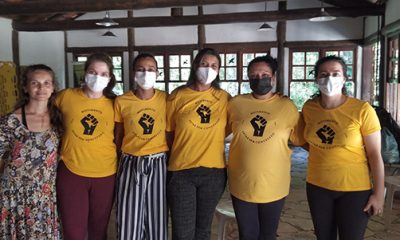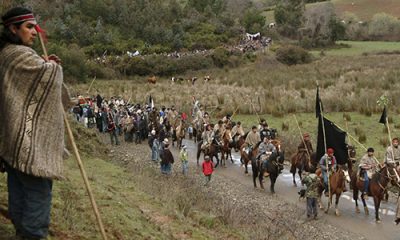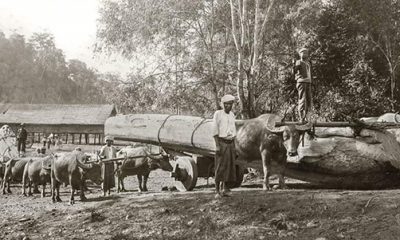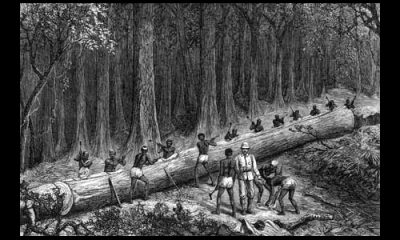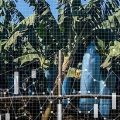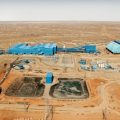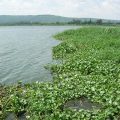SPECIAL REPORTS AND PROJECTS
A Century of Agro-Colonialism in the DR Congo
Published
3 years agoon
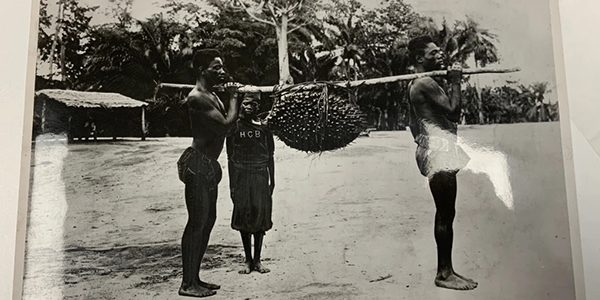
Plantation workers holding a bunch palm oil fruit. The photo was taken in the Belgian colony of Congo, probably in the 1930s or 1940s.
Many oil palm plantations’ concessions in West and Central Africa were built on lands stolen from communities during colonial occupations. This is the case in the DRC, where food company Unilever began its palm oil empire. Today, these plantations are still sites of on-going poverty and violence. It is time to end the colonial model of concessions and return the land to its original owners.
Many of the oil palm plantations now owned by multinational corporations in West and Central Africa were built on lands stolen from local communities during colonial occupations. This is the case in what is known today as the Democratic Republic of Congo (DRC), where the Anglo-Dutch multinational food company Unilever began building its palm oil empire. Today, these plantations are sites of on-going poverty, conflict and violence. There can be no solution to these problems until lands are returned to the communities and justice is realised for the harms that have endured.
In 1911, King Leopold of Belgium granted the British industrialist Lord Leverhulme vast concessions over lands that are within what is now the DRC. These forested areas, twice the area of Belgium, were full of oil palm groves, that the local inhabitants had cared for and developed over generations, converting what was once a savannah into one of the world’s most important tropical forests.
Leverhulme wanted a cheap source of vegetable oil for his company’s leading brand of detergent, Sunlight– and he wasn’t the only one turning to the people of the Congo for it. Palm oil, long an important part of food systems in Central Africa, was of growing interest to European traders, especially Portuguese traders who by then were regularly visiting communities along the Congo River to purchase palm nuts. The competition was increasing local prices for the nuts, much to the displeasure of Leverhulme. (1)
The concessions did not give Leverhulme’s company, Huileries du Congo Belge (HCB), rights over the territories of local communities living within the concession, and there was supposed to be a process to demarcate the lands within the concessions. But Leverhulme was impatient and he pushed the Belgian authorities to grant him a monopoly over the purchase of nuts in the area– under infamous “tripartite agreements” between Leverhulme, the Belgian colonial authority and local communities, who in reality had no say over the matter. From then on, locals were treated as thieves if they dared to supply nuts harvested from their own palm groves to anyone other than Leverhulme’s company– even though the open market price was generally three to four times higher than that paid by Leverhulme.
In 1924, Portuguese traders active in the area of Basoko, in today’s Tshopo province, sent a letter to the Belgium colonial authority decrying the agreements:
“This contract concluded on 5th July last prohibits anyone purchasing in whatsoever fashion products deriving from the [oil] palm, be it nuts, kernels or oil, in the concession granted to this company [HCB], and what is still more detrimental to our interests, this measure also covers products harvested on land occupied by the natives…. The natives have strictly defined rights over the fields and plantations, and over the products harvested there. How then could it be acceptable for them to be forced to surrender their palm produce to just one company? Does this obligation not deprive them of the benefit of competition? What authorised representatives of the natives could ever have concluded, in their own name, a contract which brings them only disadvantages?” (2)
Leverhulme and the Belgian colonialists justified this scandalous monopoly on the grounds that Leverhulme’s company was making significant investments in the area by building palm oil mills and providing the locals with jobs, schools, medical clinics and churches. They also concocted, without any scientific basis, an argument that the palm groves were “natural” and not, as was widely known to locals and foreigners who spent time in the area, that the palm groves were the result of generations of care and work by local communities. If the palm groves were “natural'”, the State (i.e. the Belgian colonial authority) could thus claim dominion over them and more easily justify handing control over them to Leverhulme’s company.
Neither argument held any weight. The schools that the company established were of poor quality and largely unattended by local children, who were busy labouring for the company anyways. The company’s medical services were equally inaccessible to local villagers, and as one colonial administrator admitted: “Even in the most favourable circumstances, it is still doubtful whether the benefits of medicine offset all the ills that exploitation of the palm groves causes the population … The compulsory labour is generally too onerous … The time devoted to collecting and transporting the fruit is often excessive, and the contribution made by the women and the children often puts impossible demands upon their physical strength.” The annual mortality rate around the Leverhulme’s Huileries du Congo Belge operations was said to be at a “murderous” 10 per cent. (3)
Moreover, the employment provided by the company was in reality forced labour. In a letter from 1925, a district commissioner from Basoko wrote to the provincial governor about the labour situation at Leverhulme’s operations:
“Recruitment of workers for the HCB has been for many years so unpopular with the natives that the moral pressure exerted by the territorial administrators barely prevails … The whole of Aruwini district is rich, and a worker gathering natural produce of the forest (palm nuts especially) may readily earn a living and create resources not available to him through labour in industry or trade … The only way to effect an easy transition between [forced] labour and free waged labour would be to pay the worker a wage that is at least equal to what he can earn without leaving his village or changing his habits. The only firm established in the district [the HCB] offers its workers a wage that in no way compensates them for their sacrifices.” (4)
When it came to the palm groves, it was clear to anyone who had spent a minimum of time in the area that these groves were created from the labour and care of the local communities. The Belgian agronomist and missionary Hyacinthe Vanderyst, who spent years studying the palm groves in the Congo, published an article in the Belgian periodical Congo in 1925, in which he wrote:
“All of my own observations, researches and studies confirm in the most positive and absolute fashion the argument espoused by the natives… Conversely no one has so far openly attempted to prove that the palm groves are natural formations. This is no more than an assertion, wholly lacking supporting arguments … The natives declare themselves to be the owners of the palm groves, and perhaps secondary forests, and this on several grounds: on the grounds that they were the original occupants of the country in terms of stable settlements, hunting, fishing and the harvesting of natural products; on the grounds that they were farmers who cleared and exploited the savannahs, which were thereby turned into forests, and later into palm groves; on the grounds that they were creators of palm groves thanks to their direct and deliberate intervention, which had involved introducing the oil palm into the country… For what reasons does the State deny these grounds, or refuse to take them into account?”
Vanderyst then warned his Belgian audience, “The question of the palm groves, if it is not resolved according to native customs, will remain open forever, because of its great material significance.” (5)
Leverhulme and the Belgian colonial authorities ignored his advice. A few years later, the two sides moved forward with plans to demarcate more clearly HCB’s lands, and enclose the local populations in their villages. Here is how one HCB managing director described the arrangement in a letter to the governor of Equateur Province in 1928:
“They [the natives] will be forbidden to move their villages and their cultivated fields outside the boundaries assigned to them, and they will be forbidden to gather fruit from palms on our land without rendering themselves liable to persecution … They should remain confined to their reservations. … We shall not allow them to take palm fruit from palms growing on our own concessions, in order simply to sell them to other traders; and if they engage in acts of violence against our workers or against our European agents– as they have threatened to do– we shall invoke the protection from the state guaranteed us by article 18 of our Convention.” (6)
The ‘Pende rebellion’ of 1931 – in reference to the Pende People living in the southwest of what is today DR Congo – was one of the biggest rebellions during the Belgian colonial occupation. It started in the Kwango district, in particular in the territories of Kikwit and Kandale, areas dominated by HCB’s palm oil operations, and one other company called Compagnie de Kasaí. One of the major reasons, if not the main reason, for the rebellion was the brutal policy of the colonial administration in the area, which, due to a lack of workforce for the oil palm activities, sent soldiers to the villages to violently recruit workers. The mortality among those recruited was extremely high: for every 20 workers recruited to collect oil palm fruit in and around Lusanga – the center of HCB’s oil palm operations in the region – hardly 10 returned to their villages. The economic crisis of the early 1930s further reduced the wages of workers and led the colonisers to increase taxes, which worsened the overall situation. An estimated 500 villagers were killed in clashes with the colonial army during the rebellion, and hundreds more perished in camps where they were imprisoned under brutal conditions. (7)
From colonial occupation to finance capitalism
Leverhulme’s company, which would later morph into the Anglo-Dutch multinational food giant, Unilever, eventually converted large chunks of its concessions into industrial oil palm plantations and stopped sourcing palm nuts from the remaining local palm groves. Over hundreds of thousands of hectares in various parts of the Congo, HCB implemented a racist and violent occupation of community lands according to the plan that its managing director described in 1928. For the affected communities, little changed as far as labour conditions, access to land and forests or the quality of medical, education and infrastructure services that the company was supposed to provide in exchange for this imposed occupation of the communities’ lands.
Unfortunately, Unilever’s plantations and concessions survived the end of Belgian colonial rule over the Congo in 1960. The empty promises of “development” under the colonial occupation were followed by the same empty promises under the Mobutu’s dictatorship during the late 1960’s (when the new DRC government took a minority ownership in the company and renamed it Plantations et Huileries du Congo- PHC). They were again repeated when the Canadian company Feronia Inc bought PHC from Unilever in 2009 with over US$150 million in backing from European and US “development” banks, and then again most recently when the operations were handed over to a private equity firm based in the tax haven of Mauritius– backed this time by university endowments, philanthropic giants and pension funds. (8)
In each of these iterations, the company’s owners and investors relied on a set of manufactured land documents to justify their occupation of over 100,000 hectares of lands. When the consortium of European development banks took over PHC between 2014-2016, they were aware that PHC’s flimsy land documents had expired, and they pushed the company to manufacture a new set, fragmenting the concessions into hundreds of parcels, without consulting the local communities and without even passing through the appropriate governmental decision-making bodies. The development banks, like the owners that had come before them and that would come after, rolled out the usual justifications for this theft of community lands– schools, roads, housing health clinics and good jobs. But today the communities and workers within the PHC concessions remain desperately dispossessed and therefore poor and the company’s new private equity owners are once again promising that they will soon start adhering to the country’s labour laws, that they will soon start paying minimum wages, and that they will soon provide functioning schools and medical clinics.
The communities are sick and tired of these false promises, and want to take back their lands to produce their own palm oil and other products, as they used to do generations back. But violence keeps the company in control. PHC has outlawed artisanal oil palm mills within its concessions and villagers caught with palm nuts are routinely beaten, jailed, tortured and even murdered by PHC security guards and police, who accuse them of “stealing” nuts from the company’s disputed concessions. (9) Workers trying to improve their situation face similar violence. In early January this year, police called in by PHC opened fire on workers protesting unpaid wages at its offices in Boteka, badly injuring two villagers. (10)
The company’s response to community demands for their lands is always that if it leaves there will be no employment for the locals– as if no economy existed before Leverhulme entered the picture. PHC’s former Canadian owners, Feronia Inc, even argued that it could not give the still forested parts of its concessions back to the locals because of the risk of deforestation!
This charade of “development” should have been quashed long ago. The lands that PHC and its predecessors have stolen and occupied for over a century are, as the Belgian recognised, “rich”– and the local people know, better than any, how to care for and utilise these lands and forests for their own benefit. It is time to put an end to the colonial model of concessions and plantations, and its endless promise of “development”. The rightful interests of the communities can only be served by an immediate return of their lands. Meanwhile, those foreign agencies claiming to be concerned with “development” should shift their focus to holding Unilever and the other foreign profiteers to account for this past century of labour violations, land grabbing and other abuses and preventing companies and investors from their countries from committing more abuses.
GRAIN www.grain.org
(1) The information in this article about Leverhulme’s colonial exploitation in the Congo is derived from Jules Marchal’s incredible book, Lord Leverhulme’s Ghosts, Verso Books, 2008.
(2) Marchal, p.54
(3) Marchal, p.60 and p. 89.
(4) Marchal, p.71
(5) Marchal, p.58
(6) Marchal, p. 109
(7) Wostyn, W. 2008. De Opstand in de Districten Lac Léopold II en Sankuru (1931-1932). Een vergelijkende analyse met de Pende opstand (1931).
(8) See, RIAO-RDC, FIAN Belgium, Entraide et Fraternité, CCFD-Terre Solidaire, FIAN Germany, urgewald, Milieudefensie, The Corner House, Global Justice Now!, World Rainforest Movement, and GRAIN, “Development Finance as Agro-Colonialism: European Development Bank funding of Feronia-PHC oil palm plantations in the DR Congo,” January 2021; Oakland Institute, “Meet the Investors Behind the PHC Oil Palm Plantations in DRC,” February 2022.
(9) Numerous reports and articles detailing these abuses can be found on the website farmlandgrab.org. See here.
(10) RIAO-RDC, “Policiers et militaires tirent à balles réelles sur des ouvriers de PHC en grève à la plantation de Boteka,” January 2022.
Original Source: World Rainforest Movement
Related posts:
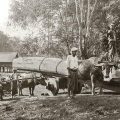
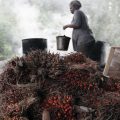 DR Congo oil palm company bankrolled by development banks unleashes wave of violence against villagers after peaceful protests
DR Congo oil palm company bankrolled by development banks unleashes wave of violence against villagers after peaceful protests
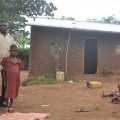 The enduring legacy of a little-known World Bank project to secure African plantations for European billionaires
The enduring legacy of a little-known World Bank project to secure African plantations for European billionaires
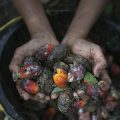 Sexual exploitation and violence against women at the root of the industrial plantation model
Sexual exploitation and violence against women at the root of the industrial plantation model
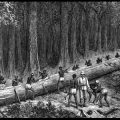 Colonization and Monoculture Plantations: Histories of Large-Scale ‘Grabbings’
Colonization and Monoculture Plantations: Histories of Large-Scale ‘Grabbings’
SPECIAL REPORTS AND PROJECTS
‘Left to suffer’: Kenyan villagers take on Bamburi Cement over assaults, dog attacks
Published
3 months agoon
March 22, 2025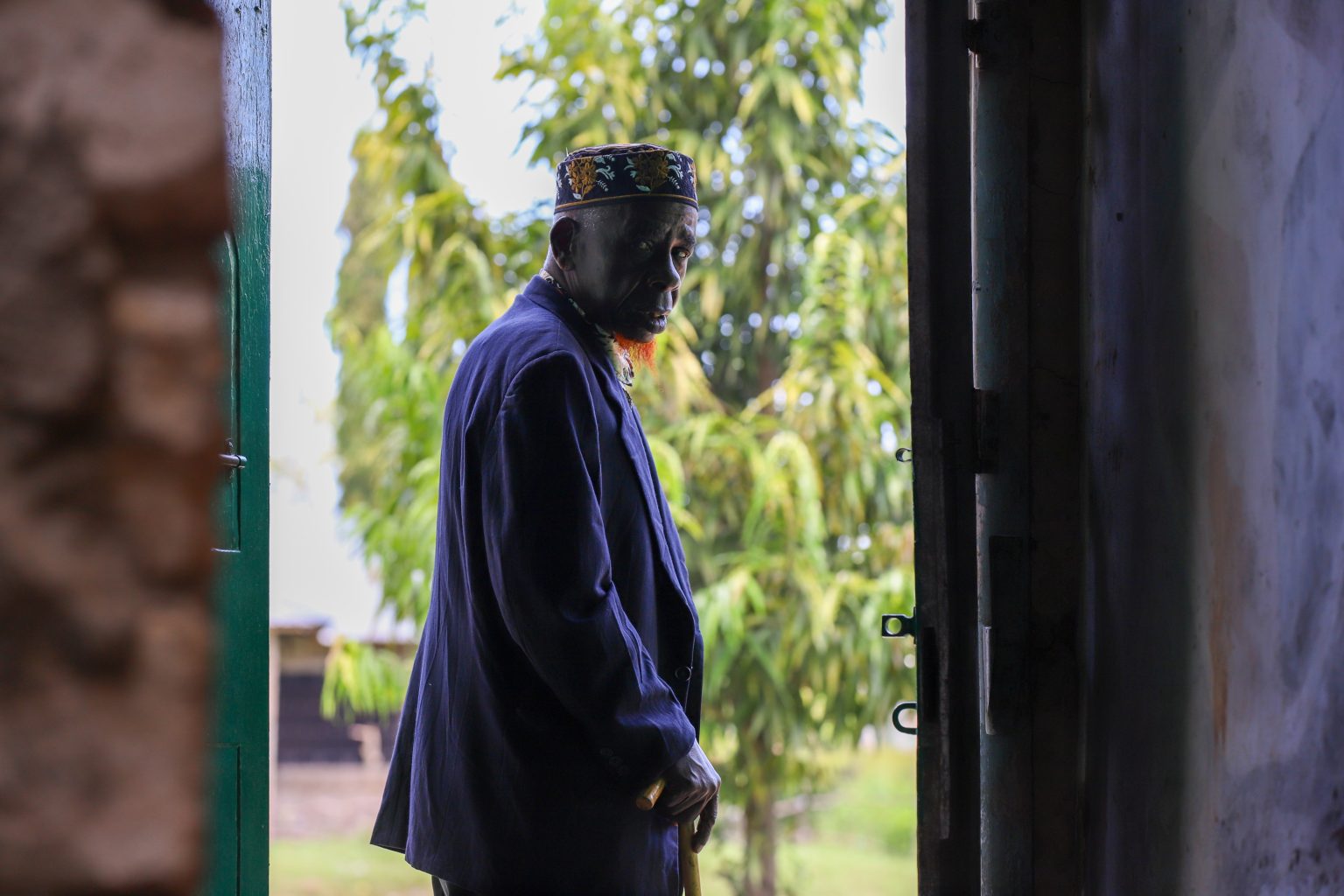
- The victims are aged between 24 and 60, and one of them has since passed on.
- Many were severely injured and hospitalized following brutal attacks, unlawful detention, and physical assault by Bamburi’s security personnel.
Editor’s note: Read the petition here.
Their hopes for justice seemed to be slipping away after initially taking on a multinational corporation and failing to hold it accountable for the brutal injuries they suffered.
The death of one of their own cast a shadow of despair, making it seem unlikely that they would ever bring the corporation to justice for the crimes they alleged.
However, 11 victims of dog attacks, assaults, and other severe human rights violations are now challenging Bamburi Cement PLC’s role in these abuses in court.
They are represented by the Kenya Human Rights Commission (KHRC), which on January 29, 2025, filed a legal claim before a constitutional court in Kenya, seeking to hold the multinational accountable for the harm suffered by the victims—residents of land parcels in Kwale that Bamburi claims ownership of. KHRC worked with the Kwale Mining Alliance (KMA) to bring this case.
The victims, aged between 24 and 60, include Mohamed Salim Mwakongoa, Ali Said, Abdalla Suleiman, Hamadi Jumadari, Abdalla Mohammed, and Omari Mbwana Bahakanda. Others are Shee Said Mbimbi, Omar Mohamed, Omar Ali Kalendi (deceased), Abdalla Jumadari, and Bakari Nuri Kassim.
Bamburi had hired a private security firm and deployed General Service Unit (GSU) officers to guard three adjoining land parcels, covering approximately 1,400 acres in Denyenye, Kwale. The GSU established a camp on the land, which has historically been accessed by residents who have long used established routes to reach the forest and the Indian Ocean.
For decades, these routes provided them with access to resources such as firewood, crops, and fish, which they relied on for their livelihoods. However, five years ago, when they attempted to collect firewood, harvest crops, and access the ocean through the land, Bamburi accused them of trespassing. The company’s private guards and GSU officers responded with force, setting dogs on them and assaulting them.
Many were severely injured and hospitalized following brutal attacks, unlawful detention, and physical assault by Bamburi’s security personnel. These incidents occurred despite the lack of clearly defined boundaries and the fact that the traditional access routes had never been contested.
According to the petition, GSU officers and private guards inflicted serious injuries by kicking, punching, and beating the victims with batons. Those who were arrested were neither taken to a police station nor charged with any offense. Despite their injuries, they were denied emergency medical care.
These actions were intended to intimidate residents, prevent them from accessing the beach, and suppress any historical claims to the land, the victims tell the court. Local police in Kwale failed to investigate the abuses, visit the crime scenes, or arrest any of the perpetrators, they add.
Now, the victims are seeking compensation for these violations. They have also asked the court to declare that their rights were violated through torture inflicted by Bamburi’s guards and GSU officers. Additionally, they want the court to rule that releasing guard dogs to attack them during arrests constituted an extreme and unlawful use of force.
Source: khrc.or.ke
Related posts:

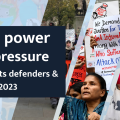 Breaking: Over 600 attacks against defenders have been recorded in the year 2023 globally- BHRRC report.
Breaking: Over 600 attacks against defenders have been recorded in the year 2023 globally- BHRRC report.
 Kaweeri Coffee land grabbing case re-trial resumes as evictees continue to suffer gross human rights violations.
Kaweeri Coffee land grabbing case re-trial resumes as evictees continue to suffer gross human rights violations.
 Criminalization of planet, land, and environmental defenders in Uganda is on the increase as 2023 recorded the soaring number of attacks.
Criminalization of planet, land, and environmental defenders in Uganda is on the increase as 2023 recorded the soaring number of attacks.
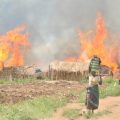 Local land grabbers evict villagers at night; foreign investors cultivate the same lands the next day
Local land grabbers evict villagers at night; foreign investors cultivate the same lands the next day
SPECIAL REPORTS AND PROJECTS
River ‘dies’ after massive acidic waste spill at Chinese-owned copper mine
Published
3 months agoon
March 22, 2025A catastrophic acid spill from a Chinese-owned copper mine in Zambia has contaminated a major river, sparking fears of long-term environmental damage and potential harm to millions of people.
The spill, which occurred on February 18, has sent shockwaves through the southern African nation.
Investigators from the Engineering Institution of Zambia revealed that the incident stemmed from the collapse of a tailings dam at the mine.
This dam, designed to contain acidic waste, released an estimated 50 million litres of toxic material into a stream feeding the Kafue River, Zambia’s most important waterway.
The waste is a dangerous cocktail of concentrated acid, dissolved solids, and heavy metals.
The Kafue River, stretching over 930 miles (1,500 kilometres) through the heart of Zambia, supports a vast ecosystem and provides water for millions. The contamination has already been detected at least 60 miles downstream from the spill site, raising serious concerns about the long-term impact on both human populations and wildlife.
Environmental activist Chilekwa Mumba, working in Zambia’s Copperbelt Province, described the incident as “an environmental disaster really of catastrophic consequences”.
The spill underscores the risks associated with mining, particularly in a region where China holds significant influence over the copper industry.
Zambia ranks among the world’s top 10 copper producers, a metal crucial for manufacturing smartphones and other technologies.
Zambian President Hakainde Hichilema has appealed for expert assistance to address the crisis. The full extent of the environmental damage is still being assessed.
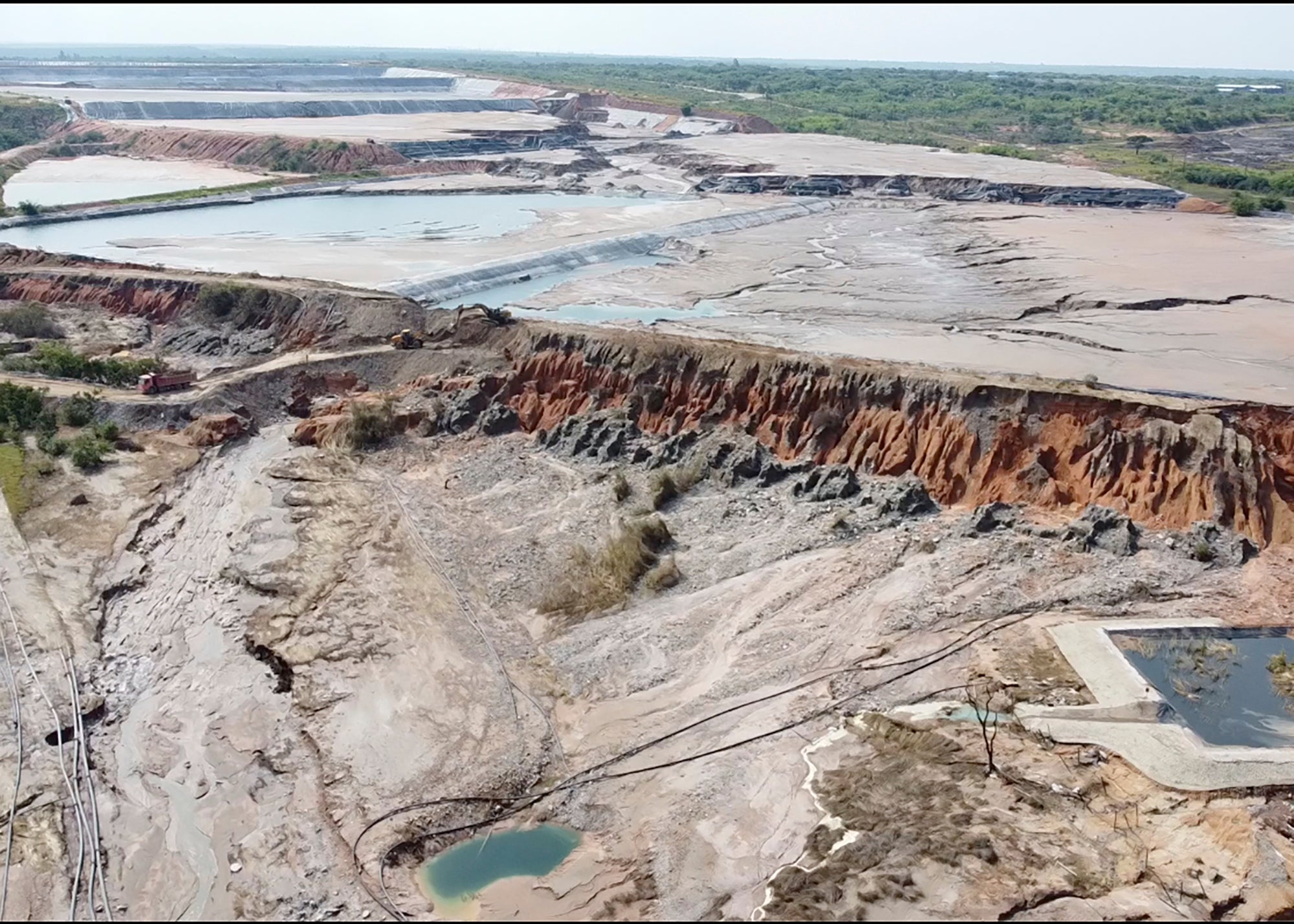
A river died overnight
An Associated Press reporter visited parts of the Kafue River, where dead fish could be seen washing up on the banks about 60 miles downstream from the mine run by Sino-Metals Leach Zambia, which is majority owned by the state-run China Nonferrous Metals Industry Group.
The Ministry of Water Development and Sanitation said the “devastating consequences” also included the destruction of crops along the river’s banks. Authorities are concerned that ground water will be contaminated as the mining waste seeps into the earth or is carried to other areas.
“Prior to February 18 this was a vibrant and alive river,” said Sean Cornelius, who lives near the Kafue and said fish died and birdlife near him disappeared almost immediately.
“Now everything is dead, it’s like a totally dead river. Unbelievable. Overnight, this river died.”
About 60 per cent of Zambia’s 20 million people live in the Kafue River basin and depend on it in some way as a source of fishing, irrigation for agriculture and water for industry. The river supplies drinking water to about five million people, including in the capital, Lusaka.
The acid leak at the mine caused a complete shutdown of the water supply to the nearby city of Kitwe, home to an estimated 700,000 people.
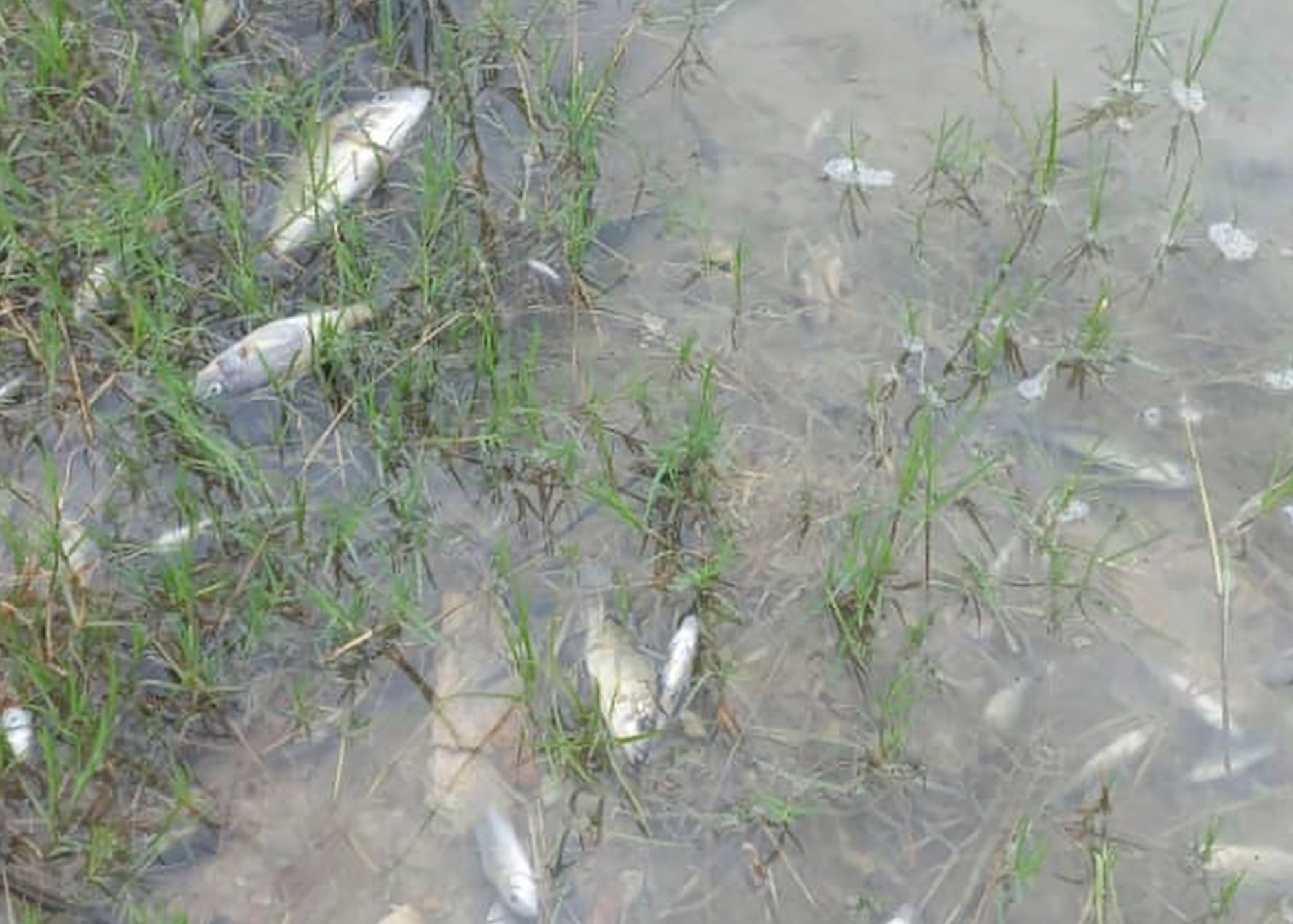
Attempts to roll back the damage
The Zambian government has deployed the air force to drop hundreds of tons of lime into the river in an attempt to counteract the acid and roll back the damage. Speed boats have also been used to ride up and down the river, applying lime.
Government spokesperson Cornelius Mweetwa said the situation was very serious and Sino-Metals Leach Zambia would bear the costs of the cleanup operation.
Zhang Peiwen, the chairman of Sino-Metals Leach Zambia, met with government ministers this week and apologized for the acid spill, according to a transcript of his speech at the meeting released by his company.
“This disaster has rung a big alarm for Sino-Metals Leach and the mining industry,” he said.
It “will go all out to restore the affected environment as quickly as possible”, he said.
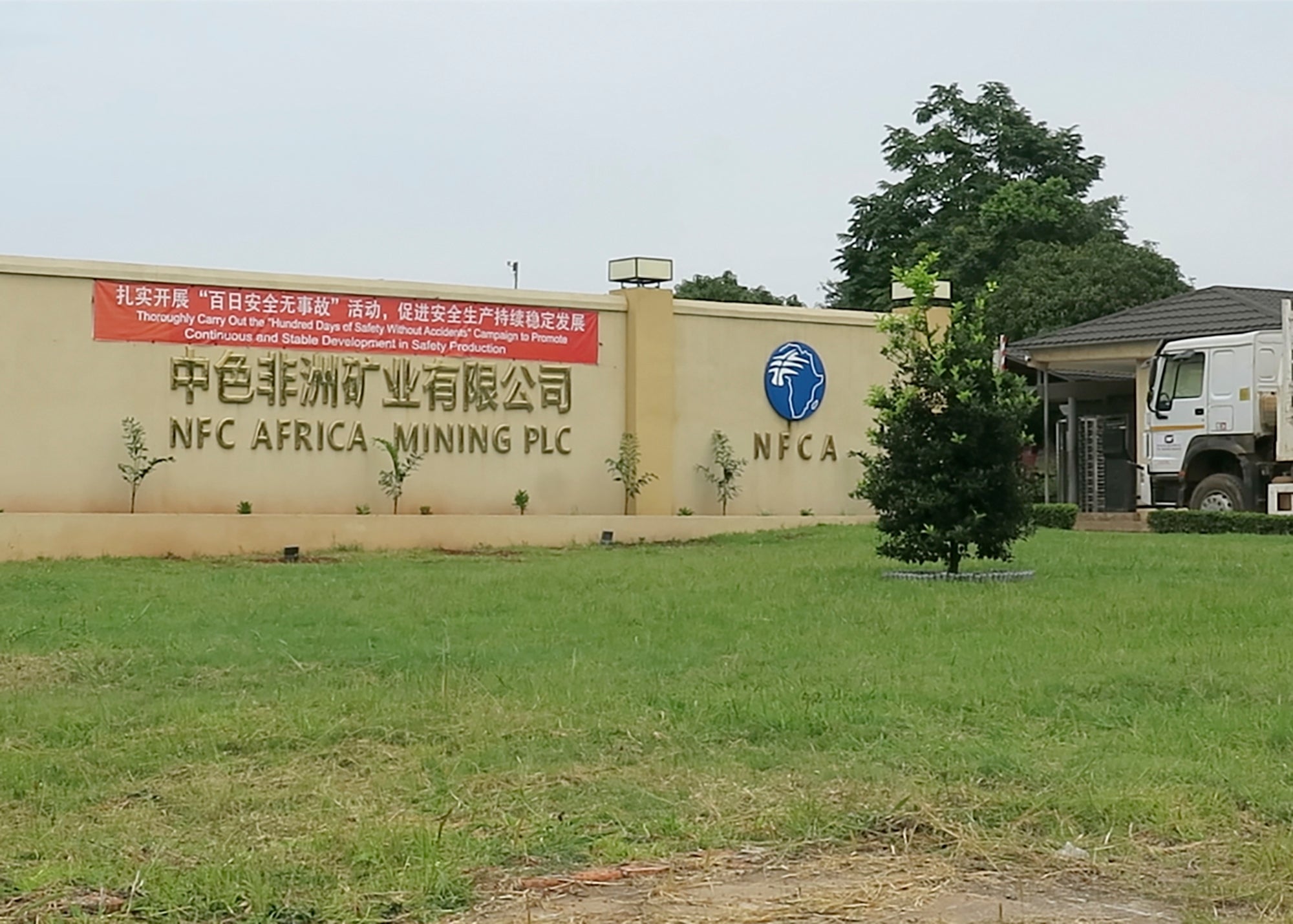
Discontent with Chinese presence
The environmental impact of China’s large mining interests in mineral-rich parts of Africa, which include Zambia’s neighbors Congo and Zimbabwe, has often been criticised, even as the minerals are crucial to the countries’ economies.
Chinese-owned copper mines have been accused of ignoring safety, labour and other regulations in Zambia as they strive to control its supply of the critical mineral, leading to some discontent with their presence.
Zambia is also burdened with more than $4 billion in debt to China and had to restructure some of its loans from China and other nations after defaulting on repayments in 2020.
A smaller acid waste leak from another Chinese-owned mine in Zambia’s copper belt was discovered days after the Sino-Metals accident, and authorities have accused the smaller mine of attempting to hide it.
Local police said a mine worker died at that second mine after falling into acid and alleged that the mine continued to operate after being instructed to stop its operations by authorities. Two Chinese mine managers have been arrested, police said.
Both mines have now halted their operations after orders from Zambian authorities, while many Zambians are angry.
“It really just brings out the negligence that some investors actually have when it comes to environmental protection,” said Mweene Himwinga, an environmental engineer who attended the meeting involving Mr Zhang, government ministers, and others.
“They don’t seem to have any concern at all, any regard at all. And I think it’s really worrying because at the end of the day, we as Zambian people, (it’s) the only land we have.”
Source: www.independent.co.uk
SPECIAL REPORTS AND PROJECTS
How Carbon Markets are Exploiting Marginalised Communities in the Global South Instead of Uplifting them
Published
7 months agoon
December 11, 2024
The billion-dollar fiction of carbon offsets
Carbon markets are turning indigenous farming practices into corporate profit, leaving communities empty-handed.
For Janni Mithula, 42, a resident of the Thotavalasa village in Andhra Pradesh, cultivating the rich, red soil of the valley was her livelihood. On her small patch of land grow with coffee and mango trees, planted over decades with tireless care and ancestral knowledge. Yet, once a source of pride and sustainability, the meaning of these trees has been quietly redefined in ways she never agreed to.
Over a decade ago, more than 333 villages in the valley began receiving free saplings from the Naandi Foundation as part of a large-scale afforestation initiative funded by a French entity, Livelihoods Funds. Unbeknownst to Janni and her neighbours, these trees had transfigured into commodities in a global carbon market, their branches reaching far beyond the valley to corporate boardrooms, their roots tethered not to the soil of sustenance but to the ledger of profit and carbon offsets.
The project claims that it would offset nearly 1.6 million tonnes of carbon dioxide equivalent over two decades. On paper, it is a triumph for global climate efforts. In reality, the residents’ lives have seen little improvement. While the sale of carbon credits has reportedly fetched millions of dollars for developers, Janni’s rewards have been minimal: a few saplings, occasional training sessions, and the obligation to care for trees that she no longer fully owns. These invisible transactions pose a grave risk to marginalised communities, who practice sustainable agriculture out of necessity rather than trend.
Also Read | COP29: The $300 billion climate finance deal is an optical illusion
The very systems that could uplift them—carbon markets intended to fund sustainability—end up exploiting their resources without addressing their needs.
Earlier this year, the Centre for Science and Environment (CSE) and Down To Earth (DTE) released a joint investigative report on the functioning of the voluntary carbon market in India. The report critically analysed the impacts of the new-age climate solution, its efficacy in reducing carbon emissions, and how it affected the communities involved in the schemes.
The findings highlighted systemic opacity, with key details about the projects, prices, and beneficiaries concealed under confidentiality clauses. Developers also tended to overestimate their emission reductions while failing to provide local communities with meaningful compensation. The report stated that the main beneficiaries of these projects were the project developers, auditors and companies that make a profit out of the carbon trading system.
Carbon markets: The evolution
On December 11, 1997, the parties to the United Nations Framework Convention on Climate Change (UNFCC) convened and adopted the Kyoto Protocol with the exigence of the climate crisis bearing down on the world. The Kyoto Protocol, revered for its epochal impact on global climate policy, focused on controlling the emissions of prime anthropogenic greenhouse gases (GHGs). One of the key mechanisms introduced was the “Clean Development Mechanism”, which would allow developed countries to invest in emission reduction projects in developing countries. In exchange, the developed countries would receive certified emission reduction (CER) credits, or carbon credits as they are commonly known.
One carbon credit represents the reduction or removal of one tonne of CO2. Governments create and enforce rules for carbon markets by setting emission caps and monitoring compliance with the help of third-party organisations. For example, the European Union Emissions Trading System (EU-ETS) sets an overall cap on emissions and allocates allowances to industries. A financial penalty system was also put in place to prevent verifiers and consultants from falsifying emissions data. The impact of these renewable projects is usually verified through methods such as satellite imagery or on-site audits.
Companies such as Verra and Gold Standard have seized this opportunity, leading the designing and monitoring of carbon removal projects. Governments and corporations invest in these projects to meet their own net-zero pledges. The companies then issue carbon credits to the investing entity. Verra has stated that they have issued over 1 billion carbon credits, translating into the reduction of 1 billion tonnes of greenhouse gas emissions. However, countless case studies and reports have indicated that only a small fraction of these funds reach the local communities practising sustainability.
Article 6 under the Paris Agreement further concretised and regulated the crediting mechanism to enable countries interested in setting up carbon trading schemes. However, the parties failed to reach a consensus regarding the specifics of Article 6 at COP 27 and COP 28. So, climate finance experts and policymakers were very interested in the developments taking place at the COP 29 summit in Baku, Azerbaijan. Unlike its predecessors, the COP 29 summit has seen a diminished attendee list, with major Western political leaders including Joe Biden, Ursula von der Leyen, Olaf Scholz, and Emmanuel Macron failing to make it to the summit due to the increasingly turbulent climate within their own constituencies.
From a post-colonial perspective, carbon markets have been viewed as perpetuating existing global hierarchies; wealthier countries and corporations fail to reduce their emissions and instead shift the burden of mitigation onto developing nations. | Photo Credit: Illustration by Irfan Khan
Sceptics questioned whether this iteration of the summit would lead to any substantial decisions being passed. However, on day-two of the summit, parties reached a landmark consensus on the standards for Article 6.4 and a dynamic mechanism to update them. Mukhtar Babayev, the Minister of Ecology and Natural Resources of Azerbaijan and the COP 29 President, said: “By matching buyers and sellers efficiently, such markets could reduce the cost of implementing Nationally Determined Contributions by 250 billion dollars a year.” He added that cross-border cooperation and compromise would be vital in fighting climate change.
India has positioned itself as an advocate for the Like-Minded Developing Countries (LMDCs) group, with Naresh Pal Gangwar, India’s lead negotiator at COP 29, saying, “We are at a crucial juncture in our fight against climate change. What we decide here will enable all of us, particularly those in the Global South, to not only take ambitious mitigation action but also adapt to climate change.”
The COP 29 decision comes in light of the Indian government’s adoption of the amended Energy Conservation Act of 2022, which enabled India to set up its own carbon market. In July 2024, the Bureau of Energy Efficiency (BEE), an agency under the Ministry of Power, released a detailed report containing the rules and regulations of the Carbon Credit Trading Scheme (CCTS), India’s ambitious plan for a compliance-based carbon market. The BEE has aimed to launch India’s carbon market in 2026.
CSE’s report highlighted the challenges and possible strategies that the Indian carbon market could adopt from other carbon markets around the world. Referring to this report, Parth Kumar, a programme manager at CSE, pointed out how low carbon prices and low market liquidity would be prominent challenges that the nascent Indian market would have to tackle.
The Global South should be concerned
Following the landmark Article 6.4 decision, climate activists called out the supervisory board for the lack of discussion in the decision-making process. “Kicking off COP29 with a backdoor deal on Article 6.4 sets a poor precedent for transparency and proper governance,” said Isa Mulder, a climate finance expert at Carbon Market Watch. The hastily passed decision reflects the pressure that host countries seem to face; a monumental decision must be passed for a COP summit to be touted as a success.
The science behind carbon markets is rooted in the ability of forests, soil, and oceans to act as carbon sinks by capturing atmospheric carbon dioxide. This process is known as carbon sequestration, and it is central to afforestation and soil health restoration projects. However, the long-term efficacy and scalability of these projects have been repeatedly questioned. The normative understanding of carbon markets as a tool to mitigate climate change has also come under scrutiny recently, with many activists calling the market-driven approach disingenuous to the goals of the climate movement.
From a post-colonial perspective, carbon markets have been viewed as perpetuating existing global hierarchies; wealthier countries and corporations fail to reduce their emissions and instead shift the burden of mitigation onto developing nations. Olúfẹ́mi O. Táíwò, Professor of Philosophy at Georgetown University, said, “Climate colonialism is the deepening or expansion of foreign domination through climate initiatives that exploit poorer nations’ resources or otherwise compromises their sovereignty.” Moreover, the effects of climate change disproportionately fall on the shoulders of marginalised communities in the Global South, even though industrialised nations historically produce the bulk of emissions.
There have also been doubts surrounding the claiming process of carbon credits and whether the buyer country or the country where the project is set can count the project towards its own Nationally Determined Contributions (NDCs). Provisions under Article 6 of the Paris Agreement state that countries cannot use any emission reductions sold to another company or country towards their own emissions targets. However, this has become a widespread issue plaguing carbon markets. The EU has recently been criticised for counting carbon credits sold to corporations under the Carbon Removal Certification Framework (CRCF) towards the EU’s own NDC targets. This has led to concerns over the overestimation of the impact of mission reduction projects.
Also Read | India needs climate justice, not just targets
Carbon offset projects, additionally, alienate local communities from their land as the idea of ownership and stewardship becomes muddled with corporate plans on optimally utilising the land for these projects. For example, in 2014, Green Resources, a Norwegian company, leased more than 10,000 hectares of land in Uganda, with additional land being leased in Mozambique and Tanzania. This land was used as a part of afforestation projects to practise sustainability and alleviate poverty in the area. However, interviews conducted with local Ugandan villagers revealed that the project forcibly evicted the local population without delivering its promises to improve access to health and education for the community. These concerns highlighted how the burden of adopting sustainable practices is placed on marginalised communities.
While carbon markets are rightfully criticised, they remain a key piece of the global climate adaptation puzzle. Addressing the issues surrounding transparency and equitable benefit-sharing with local communities could lead to carbon markets having a positive impact on climate change. The system must ensure that larger corporations and countries do not merely export their emissions, but instead implement measures to reduce their own emissions over time. It is also imperative to explore other innovative strategies such as circular economy approaches and nature-based solutions that are more localised, offering hope for a just and sustainable future.
Adithya Santhosh Kumar is currently pursuing a Master’s in Engineering and Policy Analysis at the Delft University of Technology in the Netherlands.
Source: frontline.thehindu.com
Related posts:

 A new destructive business: Carbon credits from tree plantations
A new destructive business: Carbon credits from tree plantations
 East Africa poised to monitor carbon emission
East Africa poised to monitor carbon emission
 The Rush for Carbon Concessions: More Land Theft and Deforestation
The Rush for Carbon Concessions: More Land Theft and Deforestation
 Uganda: Local communities claim they are not benefiting from Green Resources’ subsidiary’s carbon credit initiative; incl. company’s comments
Uganda: Local communities claim they are not benefiting from Green Resources’ subsidiary’s carbon credit initiative; incl. company’s comments

Communities Under Siege: New Report Reveals World Bank Failures in Safeguard Compliance and Human Rights Oversight in Tanzania

A decade of displacement: How Uganda’s Oil refinery victims are dying before realizing justice as EACOP secures financial backing to further significant environmental harm.

Carbon Markets Are Not the Solution: The Failed Relaunch of Emission Trading and the Clean Development Mechanism

Govt launches Central Account for Busuulu to protect tenants from evictions

Uganda’s top Lands Ministry official has been arrested and charged with Corruption and Abuse of Office, a significant event that will have far-reaching implications for land governance in the country.

A decade of displacement: How Uganda’s Oil refinery victims are dying before realizing justice as EACOP secures financial backing to further significant environmental harm.

Govt launches Central Account for Busuulu to protect tenants from evictions

Environmentalists raise red flags over plan to expand oil palm fields in Kalangala

Innovative Finance from Canada projects positive impact on local communities.
Over 5000 Indigenous Communities evicted in Kiryandongo District
Petition To Land Inquiry Commission Over Human Rights In Kiryandongo District
Invisible victims of Uganda Land Grabs
Resource Center
- LAND GRABS AT GUNPOINT REPORT IN KIRYANDONGO DISTRICT
- RESEARCH BRIEF -TOURISM POTENTIAL OF GREATER MASAKA -MARCH 2025
- The Mouila Declaration of the Informal Alliance against the Expansion of Industrial Monocultures
- FORCED LAND EVICTIONS IN UGANDA TRENDS RIGHTS OF DEFENDERS IMPACT AND CALL FOR ACTION
- 12 KEY DEMANDS FROM CSOS TO WORLD LEADERS AT THE OPENING OF COP16 IN SAUDI ARABIA
- PRESENDIANTIAL DIRECTIVE BANNING ALL LAND EVICTIONS IN UGANDA
- FROM LAND GRABBERS TO CARBON COWBOYS A NEW SCRAMBLE FOR COMMUNITY LANDS TAKES OFF
- African Faith Leaders Demand Reparations From The Gates Foundation.
Legal Framework
READ BY CATEGORY
Newsletter
Trending
-
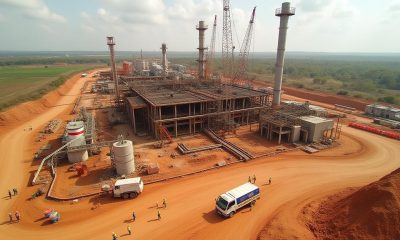
 MEDIA FOR CHANGE NETWORK2 weeks ago
MEDIA FOR CHANGE NETWORK2 weeks agoA decade of displacement: How Uganda’s Oil refinery victims are dying before realizing justice as EACOP secures financial backing to further significant environmental harm.
-
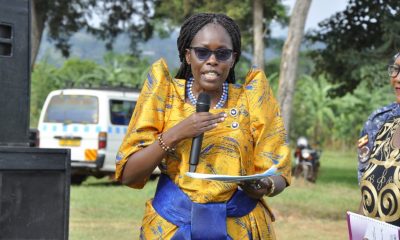
 MEDIA FOR CHANGE NETWORK2 weeks ago
MEDIA FOR CHANGE NETWORK2 weeks agoGovt launches Central Account for Busuulu to protect tenants from evictions
-
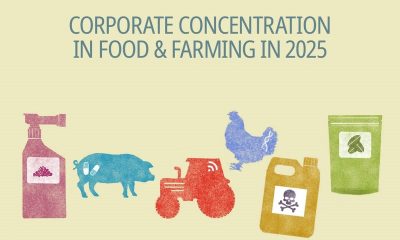
 WITNESS RADIO MILESTONES2 weeks ago
WITNESS RADIO MILESTONES2 weeks agoTop 10 agribusiness giants: corporate concentration in food & farming in 2025
-
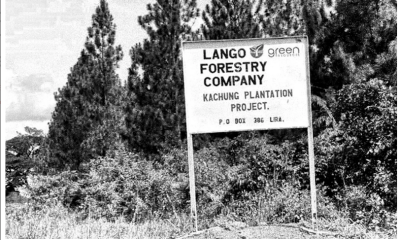
 MEDIA FOR CHANGE NETWORK2 weeks ago
MEDIA FOR CHANGE NETWORK2 weeks agoCarbon Markets Are Not the Solution: The Failed Relaunch of Emission Trading and the Clean Development Mechanism
-
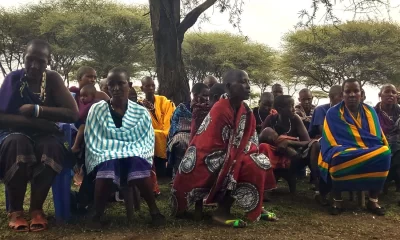
 NGO WORK2 days ago
NGO WORK2 days agoCommunities Under Siege: New Report Reveals World Bank Failures in Safeguard Compliance and Human Rights Oversight in Tanzania


